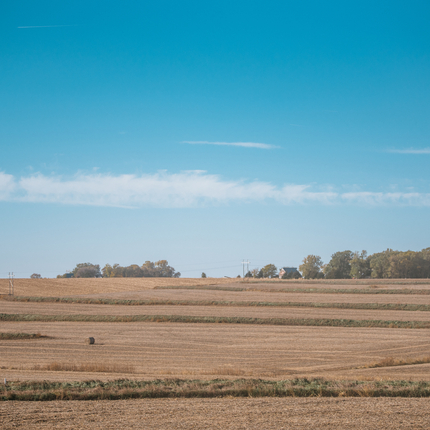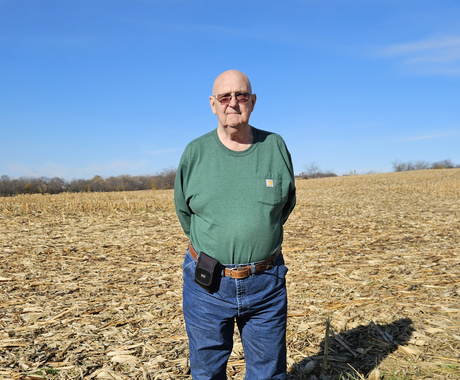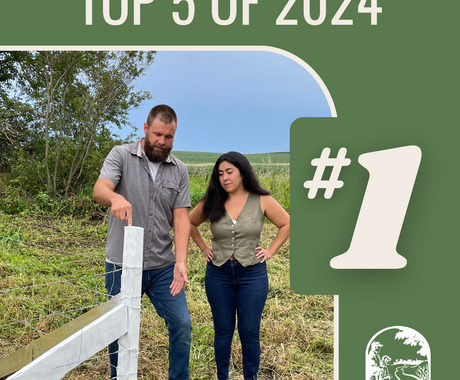Click here to learn more about how to make a comment.
The U.S. Department of Agriculture (USDA) recently released the interim final rule for its Conservation Stewardship Program (CSP).
The rule gives an overview of the changes that USDA will make in administration of CSP as part of the 2018 farm bill.
CSP is the USDA’s leading working lands and land management program. Its goal is to reward conservation efforts.
To be eligible, farmers and ranchers must demonstrate a baseline level of conservation, and, in return, CSP offers farmers and ranchers the financial and technical assistance to increase conservation across their entire operation. CSP contracts are offered for five years and are eligible for renewal.
Here is a summary of the changes made to CSP in this rule:
Who is newly eligible to enroll in CSP?
Primary operators and renters have always been able to enroll in CSP, but the new rule expands eligibility to primary operators, owners, and tenants. Because owners are eligible, there is new language requiring that applicants share in the risk of crop production and participate in day-to-day management.
Farmers and ranchers working on public lands are also newly eligible, as long as the land is under the effective control of the applicant, similar to the Environmental Quality Incentives Program (EQIP). This stipulation will have a larger impact in states with more public land.
How will the CSP application become simpler and maximize conservation?
To enroll in CSP, farmers and ranchers must demonstrate they are already conducting a baseline level of conservation and select a suite of conservation activities they plan to implement on their operations over the five-year period of the contract.
One way CSP helps farmers and ranchers increase conservation is by offering ready-made “bundles” of conservation activities. For example, one of the previous pasture health bundles included forage plantings to increase soil organic matter and prescribed grazing, weed control.
In 2019, there were approximately 30 bundles available for crop, pasture, range, forest, and other land management types. Farmer and rancher CSP applications are more likely to be funded if a bundle of conservation activities is selected.
Under the new rule, the list of activities available for “bundles” has expanded and offers greater flexibility for farmers and ranchers in selecting which practices they want to add to their operations.
What practices will receive additional payments?
Four conservation practices are slated to receive additional incentive payments. Cover crops, resource conserving crop rotations, and advanced grazing management, which can include management intensive rotational grazing, are eligible to receive higher payments. Also, comprehensive conservation planning is eligible for a one-time additional payment.
How much CSP funding will my state receive?
According to the rule, CSP funds are currently divided among the states based on several factors, including eligible land and conservation needs. While the rule doesn’t change this division formula, Natural Resources Conservation Service (NRCS) is inviting public comment on how funds should be divided among the states.
The farm bill and new rule also require funds to be allocated among the states for organic operations based on the number of organic acres and operations in each state.
A requirement that NRCS set aside 5 percent of funds for beginners and 5 percent for socially disadvantaged producers has not changed.
How is CSP funding divided within each state?
Every year, CSP applications are ranked, and the top-ranked applications are offered contracts. Under the new rule, NRCS is making small adjustments to how the ranking process is conducted. For example, if two applications tie in rank and proposed conservation benefit, the one with lower cost will be offered a contract.
The system NRCS uses to assign points is not described in detail in the rule. However, NRCS states in the rule it intends to continue giving more points to applications with more proposed conservation activities, that meet more conservation thresholds, that include bundles, that address wildlife habitat and soil health, and similar increases in conservation.
Are there limits to the size of payment an operation can receive?
Yes. NRCS is keeping the current limit that a CSP contract cannot be for more than $200,000 over five years, and that joint operations can qualify for contracts of $400,000 over five years.
There is a new provision, however, that a producer can transfer a CSP contract from an individual to joint entity, and payment limitation will increase.
The yearly payment is calculated based on the planned conservation activities. Within the limits, the size of the payment can vary from year to year, and can now exceed $40,000 in one year.
What programs can you be enrolled in at the same time as having a CSP contract?
Previously, co-enrollment in CSP and EQIP was encouraged. But, since the changes to CSP from 2017, a farmer or rancher should be able to access most conservation practices under CSP, and so the rule has deleted the language that encourages co-enrollment in other NRCS programs.
CSP participants are still allowed to be co-enrolled in third-party environmental credits programs.
Are any changes allowed mid-contract under CSP?
The rule allows for new and greater flexibility to change planned practices mid-contract. And, there are also new provisions about who can take over a contract and other ways to handle a situation where a producer is no longer able to fulfill the contract.
What are the changes for renewals and re-enrollments?
Renewing a CSP contract still requires continuing conservation practices under the previous contract and then adding additional practices.
But, contract renewals are no longer automatic, and in renewing, farmers and ranchers will now have to compete with new applicants.
If a farmer or rancher chooses not to renew, they will have to wait two years before re-applying.
Farmers and ranchers eligible to renew in 2019 were offered a one-year extension. Therefore, in 2020, the number of farmers and ranchers competing to renew will effectively double.
What other changes haven’t been mentioned yet?
Other changes in the rule include a requirement for NRCS to conduct more science-based measurement of the impact of CSP.
NRCS is also required to submit a report to Congress on the payment rates for specific conservation activities.
While not in this rule, the farm bill requires that 10 percent of CSP and other conservation program funds support practices that protect source water.
The new rule also stands up the Grasslands Conservation Initiative (which NRCS was able to roll out in early 2019).
Finally, while the Regional Conservation Partnership Program was tied to CSP under the previous farm bill, the 2018 farm bill made Regional Conservation Partnership Program a standalone program. So, language about how CSP impacts Regional Conservation Partnership Program is eliminated.
Click here to read the new CSP rule in its entirety.
Big picture—beyond the rule
The biggest change to CSP under the new farm bill is funding, which this rule can’t change. The funding for the program has sharply reduced, down to $3.975 billion over the next five years. Under the previous farm bill, the USDA’s National Resources Conservation Service was required to enroll 10 million new acres every year, and make average payments of $18 per acre. Now, there is flat funding for the program—$725 million in 2020—which will increase annually over the lifetime of the farm bill, although not to previous levels.
What this ultimately means for farmers and ranchers is there will be increased competition for those seeking to enroll in CSP.
In addition, a great deal of how CSP functions is decided not through this rule but in NRCS handbooks and other internal guidances. It is very likely an aspect of CSP that you’re interested is not addressed here. If so, we would appreciate hearing your feedback at [email protected].





